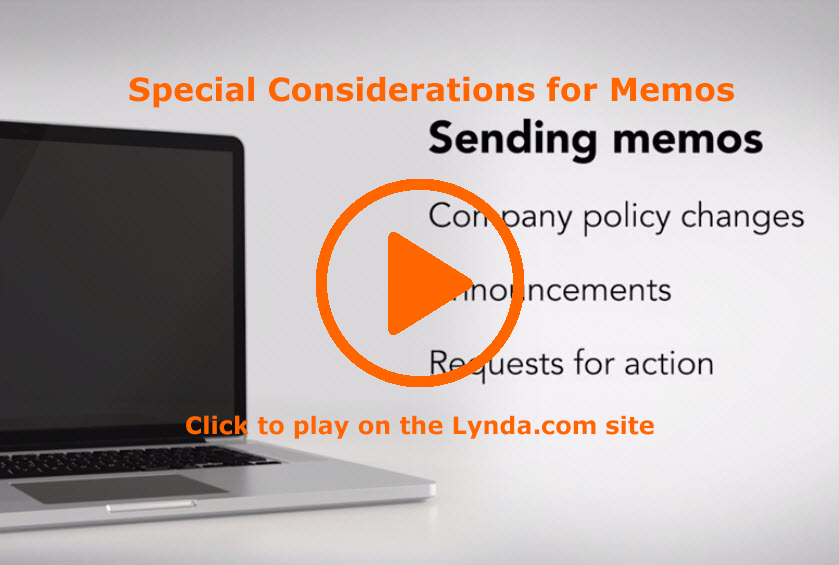This week, the daily posts focus on correspondence in general. You will find posts that apply to letters, memos, and email messages—all of which you write in the workplace. Since none of the course projects focuses on correspondence, these posts will cover this important topic.
Lynda.com Login Help
Lynda.com videos are free to Virginia Tech students with your VT.EDU login. Start at the VT.EDU login page to access these resources.
When you are not writing letters or email messages, you will often find yourself writing memos. Today’s #WeekendWatch reviews the characteristics of memos, which are typically internal messages sent to colleagues within your organization.
Like all correspondence, memos should be clear and well-organized with document design features that help readers find the information that is important to them. You can use headings, bulleted lists, and numbered lists to make details stand out.
In addition to general memos, you may find that you use specific memos in the workplace. For instance, you might use a memorandum of understanding (MoU) as a kind of contract, where you and other parties agree to specific terms. MoUs are often created by a lawyer or the organization’s legal department. If you write such a memo yourself, it will probably need to go through a legal review before it is sent to the recipient.
For details on the basic memos you are likely to write, watch the Lynda.com video Special Considerations for Memos (3m52s) to learn more:
Note: This video has closed captioning, so it does not need a transcript.
